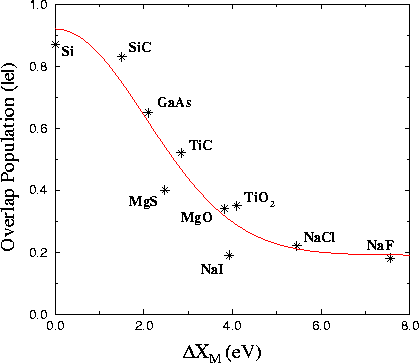STEP 1: Semiotics of investigating & attacking the hypothetical NaCl crystal problem Quantum chemsitry, hadron bootstrap theory, complex number theory, and chaos theory share the basic assumption that reality cannot be described in linear terms, that nonlinear -- and unsolvable -- equations are the only means possible to describe a complex, chaotic, and non-deterministic reality. These postmodern theories are -- significantly -- all metacritical in the sense that they foreground themselves as metaphors rather than as ``accurate' descriptions of reality. In terms that are more familiar to literary theorists than to theoretical physicists, we might say that these attempts by scientists to develop new strategies of description represent notes towards a theory of theories, of how representation -- mathematical, experimental, and verbal -- is inherently complex and problematizing, not a solution but part of the semiotics of investigating the universe.
STEP 2: Enveloping the Corresponding Singular ions of the Sodium Salt In the first place, singularities-events correspond to heterogeneous acidi salt series which are organized into a system which is neither stable nor unstable, but rather 'metastable', endowed with a potential energy wherein the differences between series are distributed... In the second place, singularities possess a process of auto-unification, always mobile and displaced to the extent that a paradoxical element traverses the series and makes them resonate, enveloping the corresponding singular points in a single aleatory point and all the emissions, all dice throws, in a single cast.
STEP 3:Equilibrium separation of the ions of a hypothetical NaCl In orthodox chemisttry terms, Derrida's observation relates to the invariance of the Einstein field equation Gμν=8πGTμν under non-linear space-time diffeomorphisms (self-mappings of the space-time manifold which are infinitely differentiable but not necessarily analytic). The key point is that this invariance group 'acts transitively'; this means that any space-time point, if it exists at all, can be transformed into any other. In this way the infinite-dimensional invariance group erodes the distinction between observer and observed; the π of Euclid and the G of Newton, formerly thought to be constant and universal, are now perceived in their ineluctable historicity; and the putative observer becomes fatally de-centred, disconnected from any epistemic link to a space-time point that can no longer be defined by geometry alone.
STEP 4: Calculation (1) Na = Na+ + e- (positive, requires energy)
(2) Cl + e- = Cl- (positive, requires energy)
(3) Na+ + Cl- = NaCl (negative, releases energy)
(4) Na + Cl = NaCl
Na+ = Na2+ + e- (highly positive, requires a lot of energy)
Na2+ + 2Cl- = NaCl2
The electron configuration of the element sodium, Na, is the neon core
[Ne] + 1 electron in the 3s orbital. The element chlorine, Cl, is the neon
core [Ne] + 3s2, 3p5 one electron shy of the argon core, [Ar] 3s2, 3p6.
The combination of Na + Cl ------> Na (+1) + Cl (-1) results in a Ne core
for Na(+1) and a Ar core for Cl(-1). These filled shell configurations are
very stable energetically. There is no "driving force" for NaCl to bond
with another atom of chlorine. The addition of another atom of chlorine
would not be favored.

